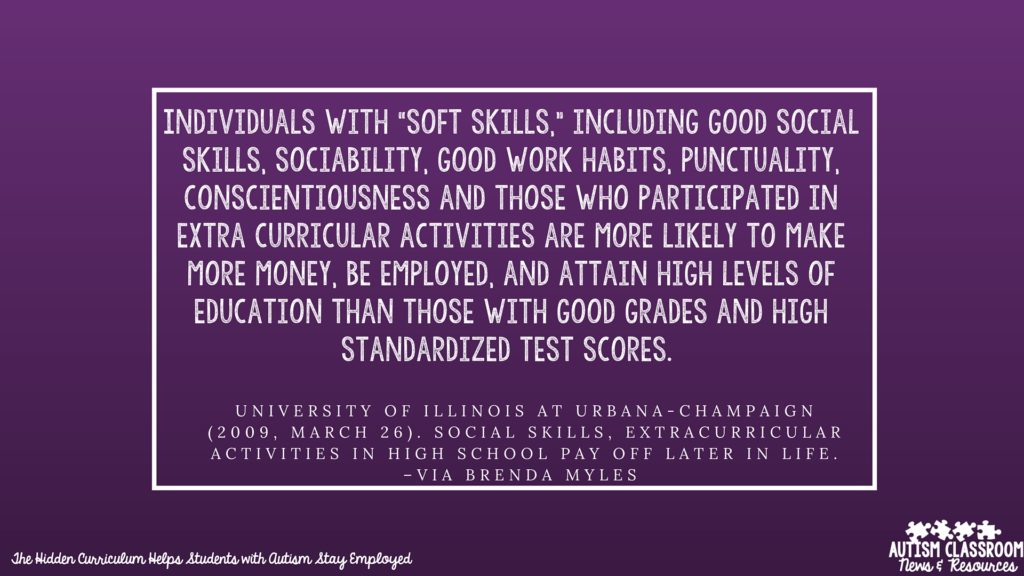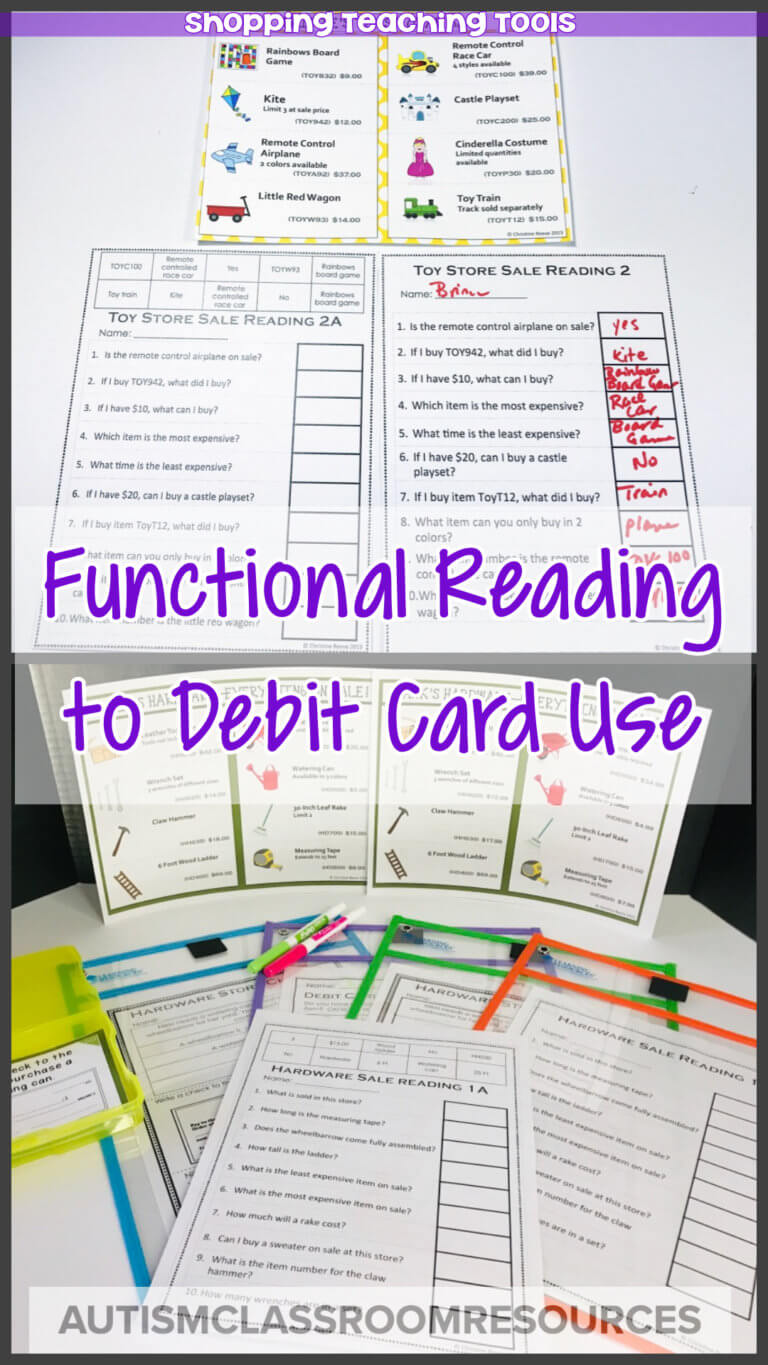I have been talking about the consequences of understanding the hidden curriculum for our students in the last few posts. Whether we work for a big organization or a small independent business, there are expected behaviors for employees. These expected behaviors present themselves in both explicit ways (e.g., the employee handbook) and implicit ways (e.g., the tone of voice your boss is using). The implicit messages and “common sense” is the hidden curriculum and it can help your students land a job and make the difference in whether or not he can keep the job.
The percentage of individuals with disabilities in general who are employed are abysmally low. For individuals with autism, they are less likely to be employed than other people with disabilities, including intellectual disabilities. According to this article, 74% of individuals with intellectual disabilities are likely to have been employed at some point after high school, compared to 58% of individuals with ASD. So it’s not the cognitive ability that is holding them back.
[Tweet “Only 58% of individuals with ASD are employed outside the home at some point in high school.”]
Further, Taylor & Seltzer (2010) indicated that those with ASD without intellectual disability were 3 times less likely to have activities outside the home during the day than those who had ID (although those with ID were likely going to day programs and sheltered workshops). Nonetheless, it makes a strong statement that being more independent and “cognitively able” is not necessarily the key for gaining and keeping employment. Unfortunately these are not new statistics and they are not statistics that are likely to change.
[Tweet “Individuals with ASD WITHOUT ID were 3 times more likely to have no daytime activities after high school.”]
So, if it’s not cognitive ability, what makes the difference? Certainly challenging behavior might account for some of the difference. However, much of it comes down to socialization and understanding the hidden curriculum. Again, teaching the hidden curriculum is critical for these students to understand how to behave in the workplace.

Meet Cindy
Cindy was diagnosed as a young child with autism. Cindy is now 23 and recently graduated from high school with a general education diploma. She wants to get a job rather than continue on in school. Cindy was very good at computers and enjoyed data entry as a sample job she tried as part of her transition plan. As such, her transition coordinator lined her up with a job doing data entry for a local company after she graduated. The vocational coordinator got her settled in the job. Quickly, it was clear she could accurately and efficiently enter data for the job and the coordinator faded out the support. Everything went along fine for the first few months on the job. Sometimes Cindy’s social interactions with her boss were a little quirky, but he understood that was part of her disability and had no difficulty with it. Cindy was happy in her job.
After a few months, Cindy’s boss got a promotion. The person who took over his position was having a number of personal problems at the time she started. Due to this, she was frequently absent or late to work, she had difficulty keeping up deadlines and getting the data to Cindy in time for Cindy to input it for the accountants. Cindy started to get very frustrated because she knew she had to do a good job.
One day at a staff meeting her boss asked how her work was going. Cindy said, “You know, you are supposed to be on time to work.” Her boss was taken aback, but agreed and explained she had personal problems going on. Cindy responded, “This is work! Leave your personal problems at home!” Her boss then wrote her up for insubordination. This type of interaction happened 2 more times and each time the supervisor wrote up Cindy’s behavior until eventually Cindy was fired.
Was Cindy wrong? Absolutely not! In this case, the boss is really the one at fault, but Cindy didn’t understand the hidden curriculum of what to do when your boss acts “un-boss-like.” Cindy’s statements were given in a matter-of-fact way, and Cindy was just stating facts and things that had been said to her. But that didn’t mean it was what her boss wanted to hear. This type of scenario is certainly not uncommon for many of our students. It may be particularly true when the person who originally hired them, understood them and probably protected them a bit moves on and the circumstances change.
Cindy was a perfect worker–she was able to do the work, she did it in a timely manner, she always met her deadlines and she showed up to work conscientiously every single day and didn’t leave until it was time. That’s better “employment” behavior than most of the people who probably worked there, and certainly more than her new boss. Nonetheless, all that she learned about how to do her job and how to be a good employee got ruined because she wasn’t able to solve a social problem and know how to handle it using the unspoken rules of interacting with your boss. Chances are good we never thought to tell Cindy, “When your boss is irresponsible, you should not call it to her attention in public.”
And of course problems in the workplace don’t have to be related to the boss. Many of our students lose jobs because they couldn’t get along with their co-workers.
- They pointed out what the co-worker was doing wrong.
- In the break room, they took off their shoes to get comfortable (and their feet smelled)
- They ate items from the shared fridge that didn’t have a name on it (even though it wasn’t their’s).
- They borrowed materials from a co-workers workspace without asking.
And on and on. Clearly we cannot think of every possible item of the hidden curriculum to teach our students to prevent these situations. But we can teach some of the items and we can teach strategies to help them identify them on their own. I’ll back next time to talk about some of those strategies.
In the meantime, do you have a story about the impact of the hidden curriculum on a student on co-worker on the job? Please share it in the comments!
Until next time,








